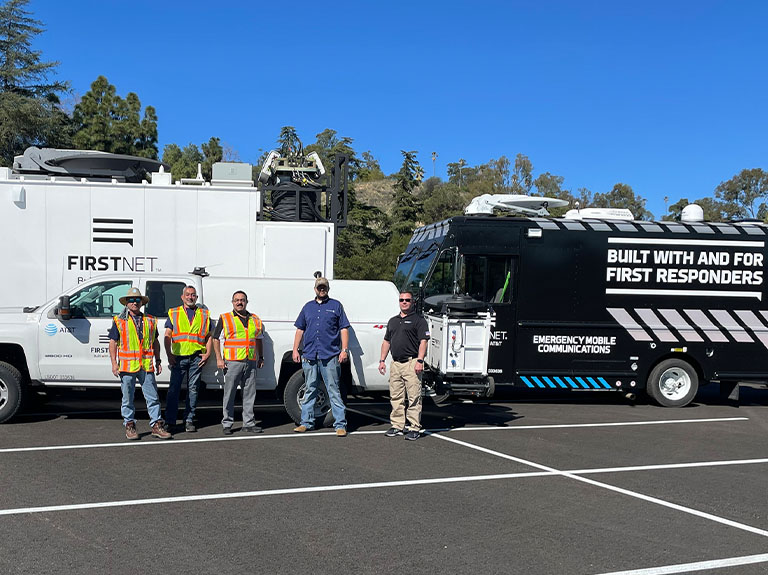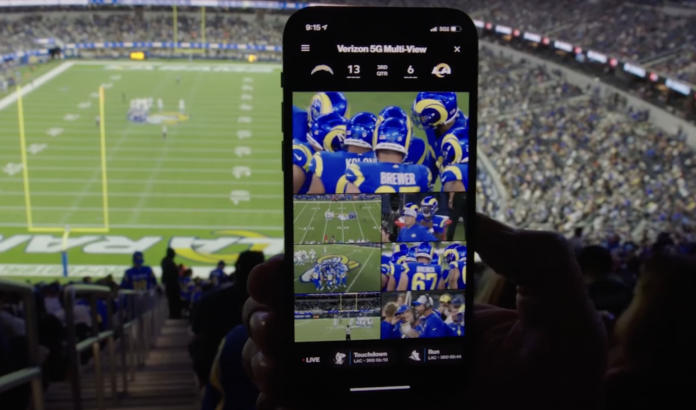In preparation for Super Bowl LVI, which takes place at Los Angeles’ SoFi Stadium this Sunday, the Tier 1 carriers have all invested heavily to bolster their 5G networks throughout the city, as well as in surrounding Inglewood. Below is a breakdown of those investments and how they will contribute to the highly anticipated game.
Verizon ‘enhances’ the Super Bowl fan experience
Verizon invested $119 million in a deployment that includes 169 new small cells, four new macro cell sites and 24 new in-building systems, all of which will provide connectivity to fans in attendance, the NFL players and stadium staff and first responders, as well as the residents of Los Angeles and Inglewood. In addition, for the more than 100 million people in the U.S. who live within Verizon’s 5G mmWave zones, the carrier promises a fast and power way to experience the game broadcast from their homes.
For on-site fans, Verizon is offering its 5G Multi-View in the NFL Ticketholder app, which reportedly allows fans to view the action with up to seven different camera angles and project augmented reality overlays of NFL’s Next Gen Stats for players and access instant replays, as long as they have select Android and iOS 5G phones.
Same as every year, the Super Bowl Halftime Show is a main attraction. This year, 5G will support real-time 4K steaming using 360-degree cameras, which will broadcast to fans’ homes, while additional cameras will also stream it throughout the stadium, so that those in attendance can “curate their own second screen experience with access to exclusive vantage points not accessible on television.”
According to Verizon’s CMO Diego Scotti, this will offer an “enhanced” version of the halftime show, “in a way that’s never been done before.”
AT&T puts public safety first
AT&T has claimed to have “gone farther than anyone in the industry to secure public safety communications,” and its game day plan is no different. The carrier said that it has spent more than a year working with local, state and federal public safety agencies to ensure that first responder communications are adequately supported on the day of the game.

“Thanks to our public-private-partnership with the First Responder Network Authority (FirstNet Authority) – an independent agency within the federal government – we’re delivering a one-of-a-kind 5G experience to first responders in Los Angeles,” the carrier stated.
In addition to its public safety push, AT&T is providing more than 10 times the capacity of the 2020 Super Bowl, as well as additional portable cell sites including 6 high-capacity COWs (Cell on Wheels).
“Our bench is deep with unprecedented bandwidth for the Big Game across all of our technology offerings, including fiber and wireless; specifically, 4G LTE, 5G and 5G+,” said Asad Paracha, RAN director at AT&T. “Overall, we’ve added thousands of wireless network elements and thousands of feet of fiber in and around the stadium.”
T-Mobile US installs nearly 200 more small cells
T-Mobile US has invested more than $100 million in 5G infrastructure across Los Angeles and claimed to cover more than 95% people in the area with its Ultra Capacity 5G network. The investment amounted to nearly 200 small cells, as well as hundreds of upgraded and newly installed 5G macro sites, and included 5G upgrades at LAX and a new 5G system at SoFi Stadium.

“The investment we’ve made in LA over the past 18 months is massive!” said Neville Ray, president of Technology at T-Mobile. “This is a powerhouse 5G network with incredible capacity using the most advanced technologies in wireless.”
The T-Mobile US network at SoFi Stadium, specifically, involves a 100 Gigabit backhaul and the deployment of Ultra Capacity 5G service using mid-band and millimeter wave spectrum. According to the carrier, the equipment delivers the capability” equal to nearly 100 traditional macro cell sites.”

